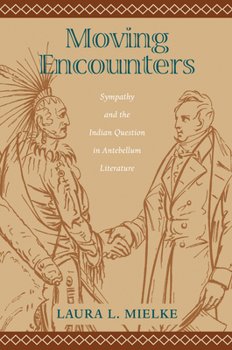Moving Encounters: Sympathy and the Indian Question in Antebellum Literature
(Part of the Native Americans of the Northeast Series)
An old Indian woman comforts two young white children she finds lost in the woods and lovingly carries them back to their eager parents. A frontiersman sheds tears over the grave of a Mohican youth, holding hands with the mourning father. According to Laura L. Mielke, such emotionally charged scenes between whites and Indians paradoxically flourished in American literature from 1820 to 1850, a time when the United States government developed and applied...
Format:Paperback
Language:English
ISBN:1558496319
ISBN13:9781558496316
Release Date:April 2008
Publisher:University of Massachusetts Press
Length:272 Pages
Weight:0.85 lbs.
Dimensions:0.7" x 6.3" x 9.1"
Grade Range:Postsecondary and higher
Customer Reviews
0 rating





